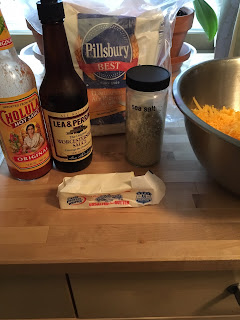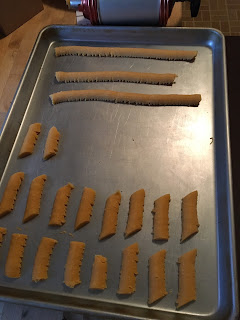When I was in grad school, my field of study was "Composition and Rhetoric." Of course, whenever I told someone I was a grad student in English, people would immediately assume that I was either studying Literature or Creative Writing. When I would say "I'm studying Composition and Rhetoric" I would watch fear flash across their faces - fearful that I'd be grading their conversation style, I guess - and the brave few would ask what that meant. My short answer was - and still is: "Composition is how you put words together to form sentences. Rhetoric is how you choose the words."
In other words, at it's most basic, Rhetoric is all about word choice. It's not a political field. It's bipartisan. It's neutral. It is clay to be molded.
But, yes, once that clay is in someone's hands, it could be molded into a dinner plate or a club - depending on which choices are made. (See also: political rhetoric.)
Most of us really don't think much about rhetoric, though it impacts us every day.
Let's say that you've purchased a new TV, and you're not sure how to hook it up. Which of the following would you be more inclined to contact?
- The Customer Care Hotline
- The Customer Service Line
- The Post-purchase Assistance Line
- The Customer Helpline
If you ask me, the one I'd want to call for help setting up my TV would be #3. Because, you know, it's after my purchase, and I need assistance. #1 sounds like it probably has someone on the other end who will pat me on the head and say calmly "there, there" - but who won't help me with my TV; #2 seems to indicate that they can help me if something is wrong with my invoice; and, frankly, #4 sounds like the people you call to help you with your turkey on Thanksgiving.
The differences are subtle, but they're important. That's rhetoric.
Rhetoric is the difference between saying that "the losing team put up a great fight" and saying "the losers fought hard." In both cases, they didn't win, but a "losing team" is emotionally different from "losers."
And, yes, rhetoric can become a powerful tool.
Consider the difference between the phrases: "the children of immigrants" and "first-generation Americans." They can both refer to the exact same group of people - people whose parents arrived in the United States before they were born - but they have very different connotations. The first sounds like the children may or may not be invested in the American culture, while the second sounds like they're wearing red, white, and blue every day. But - again - they can both describe the same demographic. When a news report (broadcast, online, print, wherever) chooses one phrase or the other, that automatically colors how we hear the news.
There is a huge difference in perception between someone who is said to be "mentally, emotionally, and physically abusive" and someone who is simply called "a bully" - and both are far removed from the tone of someone being called "an emotional terrorist." And, trust me, every good lawyer knows which phrase to use in court depending upon how he/she wants to trial to go.
When you're writing - whether it's a novel, a non-fiction report, or a Facebook post - the words you choose really do matter. They determine how you (or your characters) will be perceived by the rest of the world. Make sure your rhetoric represents you well. (An editor can help you with that.)



































